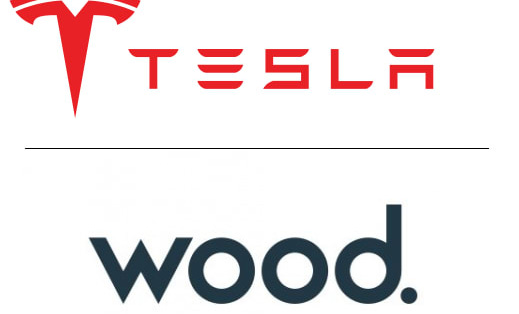Weekly Bulletin #21
Inflation, Recession & Commodities | Special Situation Opportunities
Disclaimer
Value Situations is NOT investment advice and the author is not an investment advisor.
All content on this website and in the newsletter, and all other communication and correspondence from its author, is for informational and educational purposes only and should not in any circumstances, whether express or implied, be considered to be advice of an investment, legal or any other nature. Please carry out your own research and due diligence.
Inflation, Recession and Commodities
Given the inflation news this week, I feel compelled to return to the broader theme of inflation and commodities that I explored last week for this week’s Bulletin.
The big news this week (apart from the Elon Musk/Twitter saga) has been the US inflation rate hitting a fresh four-decade high of 9.1%, comfortably ahead of the 8.8% expected by economists surveyed by Bloomberg. This news follows the release of the US non-farm payrolls report for June released last week which showed that 372,000 new workers were hired in June, well ahead of the average forecast of 265,000. The latest jobs data indicates a very tight US labour market, with the unemployment rate holding at 3.6% (a five decade low) which effectively implies full employment, further prompting inflation concerns.
The jobs report and latest inflation data suggest that the Federal Reserve may need to act more aggressively to bring down inflation, with a growing expectation that the Fed may raise rates by a further 1% at the end of this month. This would mean a cumulative increase in the Fed Funds Rate target range of 2.5% -3% since the start of this year, with further rate hikes to take the rate range to ~3.5% (or possibly higher) by the end of this year.
The big concern now is that this still-surging inflation will force the Federal Reserve to raise rates just as the US and wider global economy enters an economic slowdown thereby triggering a deep recession and potentially a credit crisis. Tempering this view is an alternative one which holds that inflation may now have peaked given how commodity prices have declined over the last ~2 months, as I wrote about in last week’s Bulletin. Indeed, since the start of June, the prices of five of the most traded and essential commodities - copper, oil, natural gas, soybeans and corn - have all fallen between ~3.8% (corn) to ~22.8% (copper), as the lockdowns in China and recessionary fears have impacted these markets:
Certainly in the near-term it seems rising rates and slowing growth is cooling demand for key commodities.
However, a piece by Robert Armstrong in his Unhedged column in the FT last week (Recession speculation comes for commodities ) does again make me wonder whether there is a disconnect between recent commodity price action and the reality of the supply set-up. In the piece Armstrong noted that monetary tightening may not lead to cooling commodity prices in the medium term, due a number of complications, with the following one standing out for me (emphasis in bold is mine in the following):
… falling commodity prices do not reflect an improvement in fundamentals, specifically an increase in supply. Instead, they reflect financial speculators’ shifting their positions in anticipation of a withering of demand that may or may not materialise.
This is supported by various market commentators’ assessment that the recent sell-off in commodities is at least in part driven by financial speculation (often leveraged) rather than actual fundamental supply/demand factors - again from Armstrong’s piece:
Turning to the oil market in particular, I asked Amrita Sen of Energy Aspects whether any aspect of the shift in prices was based in supply and demand data. She was adamant: “No fundamental basis whatsoever.”
This chimes with other recent commentary among market participants -
Hedge funds have been central to the recent price declines across commodities — selling out of long, or positive, positions in certain commodities and often replacing them with bearish wagers. Although physical supplies of many raw materials remain tight, “hedge funds are taking their chips off the table, [they] are leading big liquidation flows,” said David Whitcomb, head of research at Peak Trading Research.
Another recent comment in the WSJ also suggests shorter-term financial hedging being unwound is a factor in the recent sell-off:
Traders and analysts say that some of the decline in commodity prices can be traced to the retreat of investors who piled into markets for fuel, metals and crops to hedge against inflation.
If the above comments are accurate, then it strikes me that the recent retreat in commodity prices reflects (speculative) financial flows based on assumptions around near-term demand (slowing growth, demand destruction from high prices) but entirely overlooks the supply side of the equation.
The question for me is do these recent financial flows mask the actual reality of physical supply going forward? Interest rate hikes may quell financial speculation but they cannot increase the supply of essential commodities, which takes me back to my thinking as outlined in last week’s Bulletin - I believe there is a structural constraint on the supply of “stuff” needed by society across energy, food and materials post-Russia’s invasion of Ukraine and given megatrends such as the energy transition, population growth, and rising urbanisation. I think these factors or trends will ensure sustained demand for key commodities over the medium-to-long term.
Goldman Sachs’ recent pivot on copper captures this overly short-term focus on demand at the expense of physical supply. Goldman cut its near-term price forecasts for copper due to the current recessionary headwinds, despite only recently calling the copper market one of the tighest markets the world has ever seen! In the ~6 weeks since that commentary, Goldman believes the recent copper sell-off may not be done, and it could decline further to ~$6.7k/ton ( or -8% from current price/ton) over the next quarter, due to USD strength and the ongoing energy crisis. Yet at the same time, Goldman believes the price of copper will more than 2x in three years time to ~$15k/ton (or ~38% above its all-time high of ~$10,900/ton reached in March this year!) due to a structural bull story and supply declining:
Still, the bank said copper was on track to reach $15,000 in 2025, citing a “clear structural bull story” as mine supply peaks. It sees copper at $7,600 in six months and at $9,000 in 12 months, versus previous forecasts of $10,500 and $12,000.
So stepping back from the current market noise, I think while it is possible and perhaps likely that commodities (and wider equity markets) may fall further due to near-term recessionary fears, I see the medium term picture as bullish for commodities and clearly indicative of stagflation, with slower growth due to rising rates and inflation, combined with structural supply constraints. Indeed any downturn plus higher interest rates in the near-term will only exacerbate the supply situation in due course, reducing capex investment now when it is badly needed and thereby creating incremental supply shortfalls when the cycle turns again.
This all points to a sustained undersupply of essential commodities, and for now my conclusion is that the inflation trade is far from over, and it’s probably more apt to think of it as a stagflation trade at this point. On this basis, I see selected equities tied to niche and essential commodities with constrained supply set-ups as being very interesting, particularly if stock prices decline further in the near term.
Special Situation Opportunities
In the current environment, aside from niche commodity plays I see special situations that offer asymmetric and uncorrelated return opportunities as being the other area of the market worth focusing on at present.
Within this theme, Bloomberg had an interesting article last week regarding top takeover targets based on a recent survey it conducted. Top of the list was Swiss-listed banking software business Temenos AG, which has recently attracted private equity interest. However given recessionary concerns and tightening financial conditions, M&A and takeover activity has slowed, while some deals have been agreed at lower values or opportunistically re-priced following initial offers.
That said, it is a rich environment for merger arb investing despite the uncertain macro backdrop and I still think merger/divestment situations offer some interesting opportunities. Papered, all-cash deals such as Microsoft’s bid for Activision Blizzard is one obvious example, with a current spread of ~25% with the deal expected to close by June 2023 (even Warren Buffett likes this, having placed an enormous ~$4.7bn bet on this one, as I wrote about before) but I think there a few other situations within this theme that look interesting currently:
1. GSK-Haleon Spin-Off
GSK is scheduled to spin-off its consumer healthcare business, being branded as Haleon Plc, next Monday July 18th.
Unilever unsuccessfully bid £50bn for the unit back in January, at an implied valuation of ~23.8x LTM EBITDA (~21x NTM) at the time. GSK rejected the offer on the basis that it undervalued the business and instead opted for the spin-off following pressure from activist Elliot Management.
Value Sits View
Two factors make this situation interesting in my view:
Haleon is a defensive consumer-healthcare business being the owner of leading brands such as Advil and Panadol painkillers, Otrivin decongestant, Sensodyne toothpaste and Theraflu cold and flu medicine; and
Haleon pre-spin is a JV with Pfizer, who currently own ~32% of the unit, with GSK to spin-off at least 80% of their 68% stake.
Given the recessionary backdrop, defensive consumer healthcare is a sector that should hold up reasonably well, but it is the spin-off structure and ownership dynamics that could make this a potentially very interesting situation in due course.
Firstly, the spin is structured as a de-merger with GSK shareholders each to receive 1 share in Haleon for ever 1 share they hold in GSK. Post-spin, the shareholder base will be as follows:
GSK shareholders to hold at least 54.5% following 1-for-1 share distribution
Pfizer to hold 32%
Scottish limited partnerships (SLPs) controlled by GSK to hold 7.5% (these were previously set up as vehicles to fund GSK’s UK pension schemes)
GSK to hold 6%
As with most spin-offs, I would expect a wave of non-fundamental selling by institutional investors who may not want to own Haleon shares for mandate or portfolio construction/management reasons. This could depress Haleon’s share price initially, creating an undervalued situation.
But most interestingly, the Haleon prospectus states that Pfizer “has informed the Company (Haleon) that it intends to exit its position in the Company in a disciplined fashion” while GSK too is likely to offload its stake (possibly including the SLP holdings) in due course. As such, there is a potential “overhang” of 38% - 45.5% of Haleon’s stock at the outset, which the market knows will be offloaded at some point.
This overhang and the inevitable selling may lead to a depressed valuation in time for what is a very defensive, market-leading portfolio of consumer health and wellness products. As such, this is a situation I will be monitoring.
2. Wood Group Plc
A previous Value Sits Quick Idea, Wood Group Plc (WG) has declined ~40% since I last wrote about it, despite the positive news last month that it has agreed to sell its Built Environment consulting business for ~$1.9bn (net proceeds of ~$1.6bn).
Value Sits View
As I outlined before, this disposal is a transformative event for WG after a troubled ~12 months, marked by revenue and profit warnings and a $100m exceptional charge due to a loss-making legacy contract. Receipt of disposal proceeds is expected in H2 this year and should see WG’s balance sheet transition to a net cash position.
Furthermore since the disposal announcement, WG has appointed a new CEO, in previous COO Ken Gilmartin and most recently provided a positive half-year trading update which indicated a return to revenue growth for H1 FY22, and strong order book growth of +18%, to c.$8.1 billion (or ~1.25x FY21 revenues). Assuming receipt of the $1.6bn in net disposal proceeds, WG is now trading ~4x LTM EBITDA ex-Built Environment unit (vs. historic 7x - 8x through the cycle multiples for WG and peers), and its worth noting LTM EBITDA was depressed by project delays and is not representative of future earnings power (which is supported by the order book).
WG’s share price has presumably declined in tandem with the recent sell-off across the wider O&G complex. In line with my commentary above on recession and commodities, I think this sell-off is short-sighted given WG’s positive prospects. Recall that its strategic focus is on key growth areas of energy security, decarbonisation, the energy transition and low carbon/renewable energy development, in addition to it having a strong O&G services business.
As such I believe it may be mis-priced relative to its future prospects and is well positioned to benefit from any new capex investment to mitigate the ongoing energy crisis.
Any Other Business
For this week’s AOB, I’m sticking with the inflation and commodities themes in sharing an excellent Smarter Markets podcast discussion with Jeff Currie, Global Head of Commodities Research at Goldman Sachs.
In the discussion, Currie gives a great overview of how we arrived at the current energy crisis and describes the current situation as the “Revenge of the Old Economy.” During the discussion, it is stated “You can print money, but you can’t print energy, food and materials” which I think captures much of the point around undersupply of essential commodities and how raising interest rates will not cool inflationary forces in these commodities.
Why Not Subscribe to the Paid Tier?
If you find the ideas in this newsletter interesting, please considering signing up to the newly launched Paid Tier.
You can read more about the paid offering here.
This newsletter is 100% reader supported and free from conflicts of interest or other commercial considerations. In writing Value Situations my job is essentially to generate ideas for subscribers that supplements their own idea origination process.
Furthermore, I believe the value proposition for paying subscribers is compelling. I am a former private equity/special sits investor that has worked with one of the largest alternative investment firms in the world, and so paying subscribers will be getting thoughtful, buy-side quality ideas and analysis for a very small fraction of the cost of employing a buy-side analyst full-time.
If you find this newsletter interesting, please also consider sharing it with friends and colleagues by clicking the Share button below.
Here’s what other investors are saying about Value Situations:






Value Situations was named as one of the Top 100 Must Follow Stock Research accounts by Edwin Dorsey of The Bear Cave Newsletter:
















